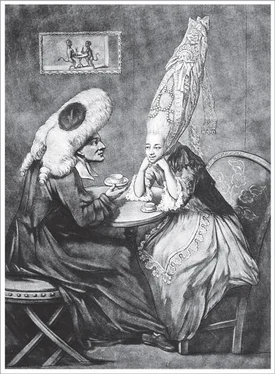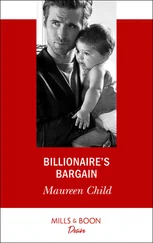Bill Bryson - At Home
Здесь есть возможность читать онлайн «Bill Bryson - At Home» весь текст электронной книги совершенно бесплатно (целиком полную версию без сокращений). В некоторых случаях можно слушать аудио, скачать через торрент в формате fb2 и присутствует краткое содержание. Жанр: Старинная литература, на английском языке. Описание произведения, (предисловие) а так же отзывы посетителей доступны на портале библиотеки ЛибКат.
- Название:At Home
- Автор:
- Жанр:
- Год:неизвестен
- ISBN:нет данных
- Рейтинг книги:4 / 5. Голосов: 1
-
Избранное:Добавить в избранное
- Отзывы:
-
Ваша оценка:
- 80
- 1
- 2
- 3
- 4
- 5
At Home: краткое содержание, описание и аннотация
Предлагаем к чтению аннотацию, описание, краткое содержание или предисловие (зависит от того, что написал сам автор книги «At Home»). Если вы не нашли необходимую информацию о книге — напишите в комментариях, мы постараемся отыскать её.
At Home — читать онлайн бесплатно полную книгу (весь текст) целиком
Ниже представлен текст книги, разбитый по страницам. Система сохранения места последней прочитанной страницы, позволяет с удобством читать онлайн бесплатно книгу «At Home», без необходимости каждый раз заново искать на чём Вы остановились. Поставьте закладку, и сможете в любой момент перейти на страницу, на которой закончили чтение.
Интервал:
Закладка:
As electricity became more freely available, many people found it unnerving to be relying for comfort on an invisible force that could swiftly and silently kill. Most electricians were hastily trained and all were necessarily inexperienced, so the profession quickly became one for daredevils. Newspapers gave full and vivid accounts whenever an electrician electrocuted himself, as happened pretty routinely. In England, the poet Hilaire Belloc offered a snatch of doggerel that caught the public mood:
Some random touch—a hand’s imprudent slip—
The Terminals—flash—a sound like “Zip!”
A smell of burning fills the startled Air—
The Electrician is no longer there!
In 1896, Edison’s former partner Franklin Pope electrocuted himself while working on the wiring in his own house, proving to many people’s satisfaction that electricity was too dangerous even for experts. Fires due to electrical faults were not uncommon. Lightbulbs sometimes exploded, always startlingly, sometimes disastrously. The new Dreamland Park at Coney Island burned down in 1911 after a lightbulb burst. Errant sparks from faulty connections caused more than a few gas mains to explode, which meant that one didn’t even have to be connected to the electricity supply to be perilously at risk.
Something of the prevailing ambivalence was demonstrated by Mrs. Cornelius Vanderbilt, who went to a costume ball dressed as an electric light to celebrate the installation of electricity in her Fifth Avenue home in New York, but later had the whole system taken out when it was suspected of being the source of a small fire. Others detected more insidious threats. One authority named Shirley Foster Murphy, in Our Homes, and How to Make Them Healthy (1883), identified a whole host of electrically induced maladies—eyestrain, headaches, general unhealthiness, and possibly even “the premature exhaustion of life.” One architect was certain electric light caused freckles.
For the first few years, no one thought of plugs and sockets, so any electrical appliances had to be wired directly into the system. When sockets did finally come in, around the turn of the century, they were available only as part of overhead light fittings, which meant having to stand on a chair or stepladder to plug in any early appliance. Wall sockets soon followed, but weren’t always terribly reliable. Early ones reportedly tended to crackle and smoke, and sometimes shot out sparks. At one stately home in Scotland, until well into Edwardian times it was the practice to throw cushions at one particularly lively wall outlet, according to the historian Juliet Gardiner.
Consumer growth was also held back by the depression of the 1890s. But electric lighting was ultimately irresistible. It was clean, steady, easy to maintain, and available instantaneously and in infinite amounts at the flick of a switch. Gas lighting had taken half a century to establish itself, but electric lighting caught on much more quickly. By 1900, in cities anyway, electric lighting was increasingly the norm—and electrical appliances ineluctably followed: the electric fan in 1891, the vacuum cleaner in 1901, the washing machine and electric iron in 1909, the toaster in 1910, the refrigerator and dishwasher in 1918. By that time, some fifty types of household appliances were reasonably common, and electrical gadgets were so fashionable that manufacturers were producing every possible kind they could think of, from curling tongs to an electric potato peeler. The annual use of electricity in the United States went from 79 kilowatt hours per capita in 1902, to 960 in 1929, to well over 13,000 today.
It is right to give Thomas Edison the credit for much of this, so long as we remember that his genius was not in creating electric light, but in creating methods of producing and supplying it on a grand commercial scale, which was actually a much larger and far more challenging ambition. It was also a vastly more lucrative one. Thanks to Thomas Edison, electric lighting became the wonder of the age. Interestingly, as we shall see a little further on, electric lighting turned out to be one of the remarkably few Edison inventions that actually did what he hoped it would do.
Joseph Swan was so thoroughly eclipsed that few have heard of him outside England, and he isn’t terribly much celebrated there. Britain’s Dictionary of National Biography gives him a modest three pages, less than it gives to the courtesan Kitty Fisher or any number of talentless aristocrats. But then that’s much more than Frederick Hale Holmes, who doesn’t get mentioned at all. History is often like that.
* The French, according to A. Roger Ekirch in At Day’s Close: A History of Nighttime , had a curious expression, which I pass on without comment: “By candle-light a goat is lady-like.”
* Both gasoline and kerosene were variously spelled in the beginning. Gesner actually termed his product “Kerocene” in his patent application of 1854. Scientists hate inconsistency, and petroleum geologists have from time to time tried to make the spelling of the terminal syllables match, but obviously without success. They have been equally unsuccessful with the terminal pronunciations of hydrocarbons, as evidenced by turpentine . The British resolved part of the problem by calling kerosene paraffin .
* South Foreland Lighthouse, now in the hands of the National Trust and very much worth a visit, became famous again in 1899 when Guglielmo Marconi transmitted the first international radio signal from there to Wimereux in France.
• CHAPTER VII •
THE DRAWING ROOM
I
If you had to summarize it in a sentence, you could say that the history of private life is a history of getting comfortable slowly. Until the eighteenth century, the idea of having comfort at home was so unfamiliar that no word existed for the condition. Comfortable meant merely “capable of being consoled.” Comfort was something you gave to the wounded or distressed. The first person to use the word in its modern sense was the writer Horace Walpole, who remarked in a letter to a friend in 1770 that a certain Mrs. White was looking after him well and making him “as comfortable as is possible.” By the early nineteenth century, everyone was talking about having a comfortable home or enjoying a comfortable living, but before Walpole’s day no one did.
Nowhere in the house is the spirit (if not always the actuality) of comfort better captured than in the curiously named room in which we find ourselves now, the drawing room. The term is a shortening of the much older withdrawing room , meaning a space where the family could withdraw from the rest of the household for greater privacy, and it has never settled altogether comfortably into widespread English usage. For a time in the seventeenth and eighteenth centuries, drawing room was challenged in more refined circles by the French salon , which was sometimes anglicized to saloon , but both those words gradually became associated with spaces outside the home, so that saloon came first to signify a room for socializing in a hotel or on a ship, then a place for dedicated drinking, and finally, and a little unexpectedly, a type of automobile. Salon , meanwhile, became indelibly attached to places associated with artistic endeavors before being appropriated (from about 1910) by providers of hair care and beauty treatments. Parlor , the word long favored by Americans for the main room of the home, has a kind of nineteenth-century frontier feel to it, but in fact is the oldest word of all. It was first used in 1225, referring to a room where monks could go to talk (it is from the French parler , “to speak”), and was extended to secular contexts by the last quarter of the following century.
Читать дальшеИнтервал:
Закладка:
Похожие книги на «At Home»
Представляем Вашему вниманию похожие книги на «At Home» списком для выбора. Мы отобрали схожую по названию и смыслу литературу в надежде предоставить читателям больше вариантов отыскать новые, интересные, ещё непрочитанные произведения.
Обсуждение, отзывы о книге «At Home» и просто собственные мнения читателей. Оставьте ваши комментарии, напишите, что Вы думаете о произведении, его смысле или главных героях. Укажите что конкретно понравилось, а что нет, и почему Вы так считаете.












